Couchbase Capella™ is a highly performant, available, and scalable Database-as-a-Service (DBaaS) platform built to reduce management, maintenance, and operational burdens. At the same time, Capella is also designed to make it easier for new teams to get started with Couchbase. Along those lines, we’ve made some recent enhancements to make getting started even easier in the areas of importing, exploring, and connecting to your data. New users can begin a trial by simply selecting their region and cloud provider of choice and have a database up and running in minutes. From there, you can import your datasets or explore our preloaded data. So let’s take a closer look at the latest Capella features.
Flexible importing options
Users have two ways to bring custom datasets into Capella: they can utilize the built-in browser import interface or leverage the Couchbase import utility, cbimport. Both allow for the import of CSV and TSV files, JSON docs, or JSON lines. For datasets smaller than 40 MB, the easiest route is the Capella web UI.
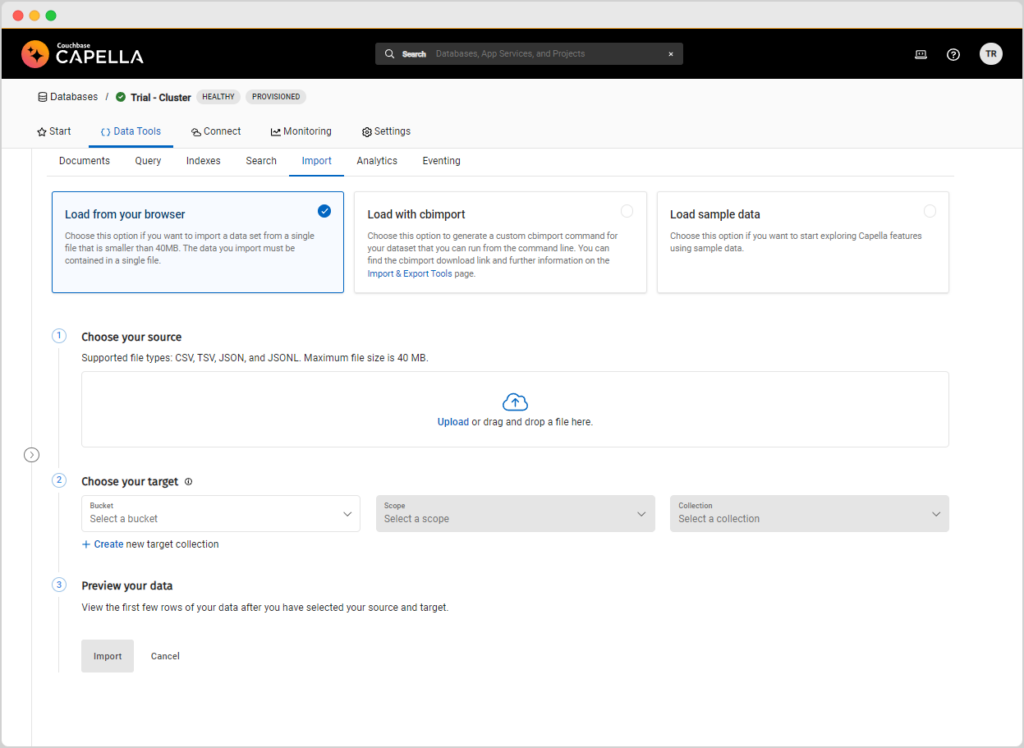
Capella UI importing
Uploading data via the Capella web UI offers an easy step-by-step flow. It presents users with a preview of the data before uploading, defines document identifiers, and allows users to set import rules like fields to exclude. For new data, most users will want to create a new target bucket. This process has been streamlined as well. Uploading happens in seconds and a confirmation message provides a link to view the loaded data.
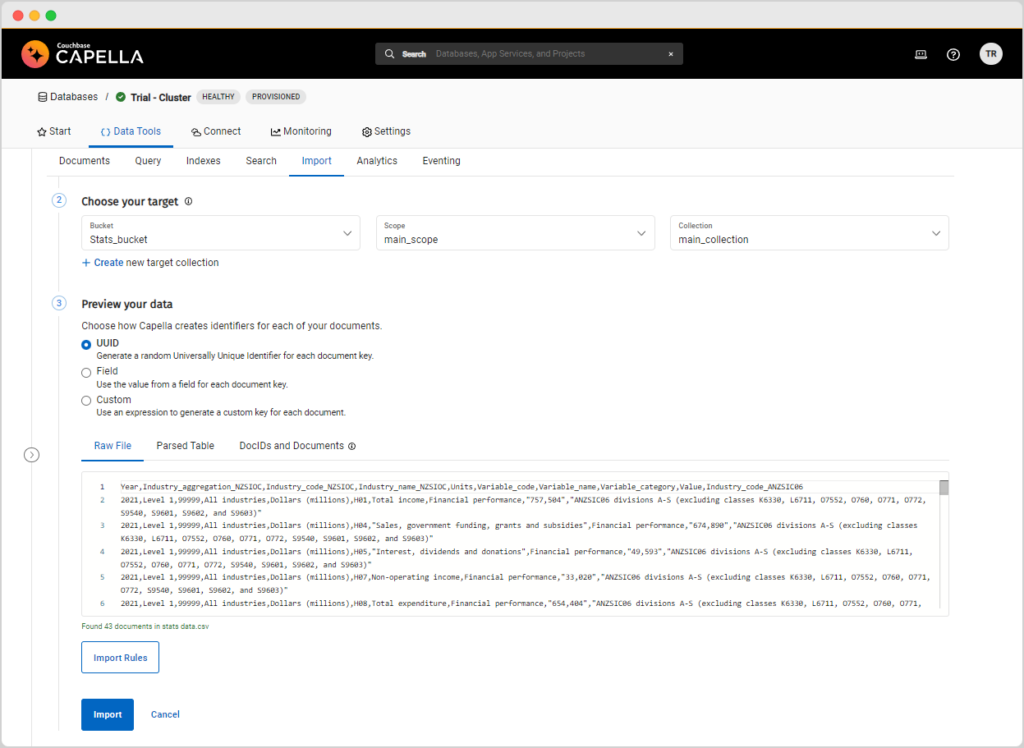
Couchbase import utility (cbimport)
The cbimport utility is one of the Couchbase command line tools suite, which needs to be downloaded and connected to your Capella database. It provides the same flexibility in terms of the loading process but handles much more data. More details can be found on the Docs website.
Once your data is imported, the Capella UI provides helpful data tools to review and explore your data.
Powerful exploration of documents and data
Document Viewer
Within the Data Tools tab, the Document Viewer allows users to visualize their dataset. On the left side is a data insights area to quickly browse your data schema, expand scopes and collections, and swiftly retrieve the documents within those. Dropdowns in the main area provide fast pagination and filtering options for your documents. Any of those documents can be double-clicked to review the data inside.
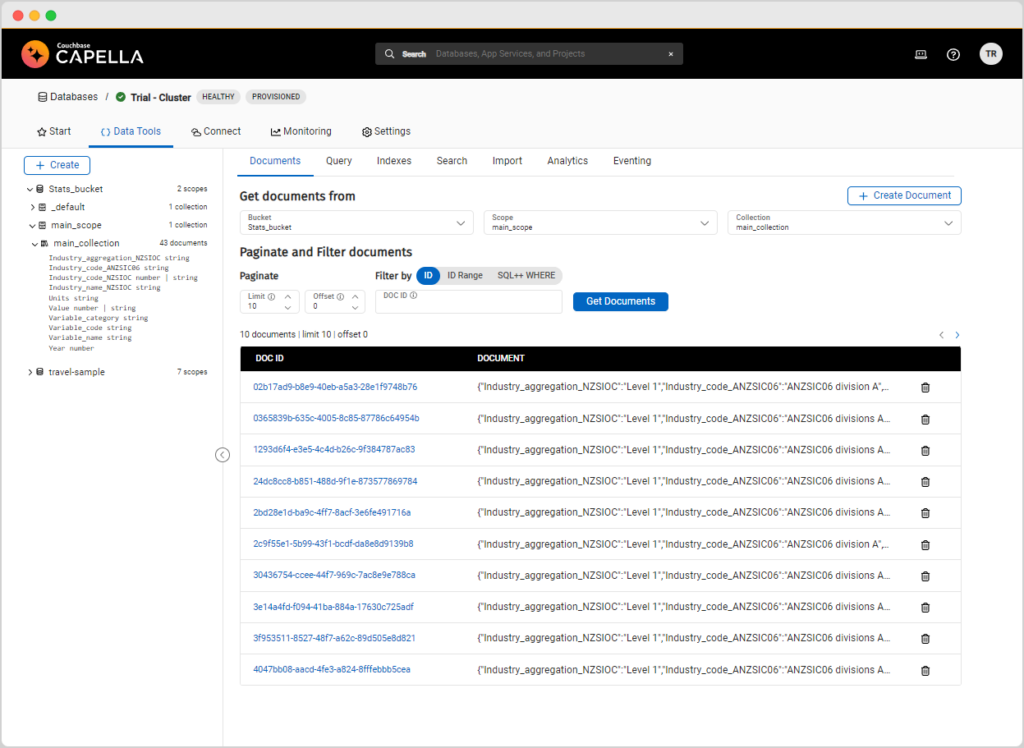
Simple index creation
For new data loaded into Capella, you will want to create indexes to speed up your SQL++ queries – whether those are done in the UI Query Workbench, via your IDE, or from your application. A primary index is required and secondary indexes can be added for performance gains. Going to the Query tab presents the Query Workbench. The Index Advisor tool makes this easy by presenting options to build both types of indexes. To build a primary index, run a “Select * From collection_name” and the Index Adviser provides a button to Create Primary Index. For more secondary indexes, the Advisor can be used following the execution of more advanced queries. Secondary indexes may not be needed depending on your dataset size and speed requirements – as an in-memory database, Capella is quite quick.
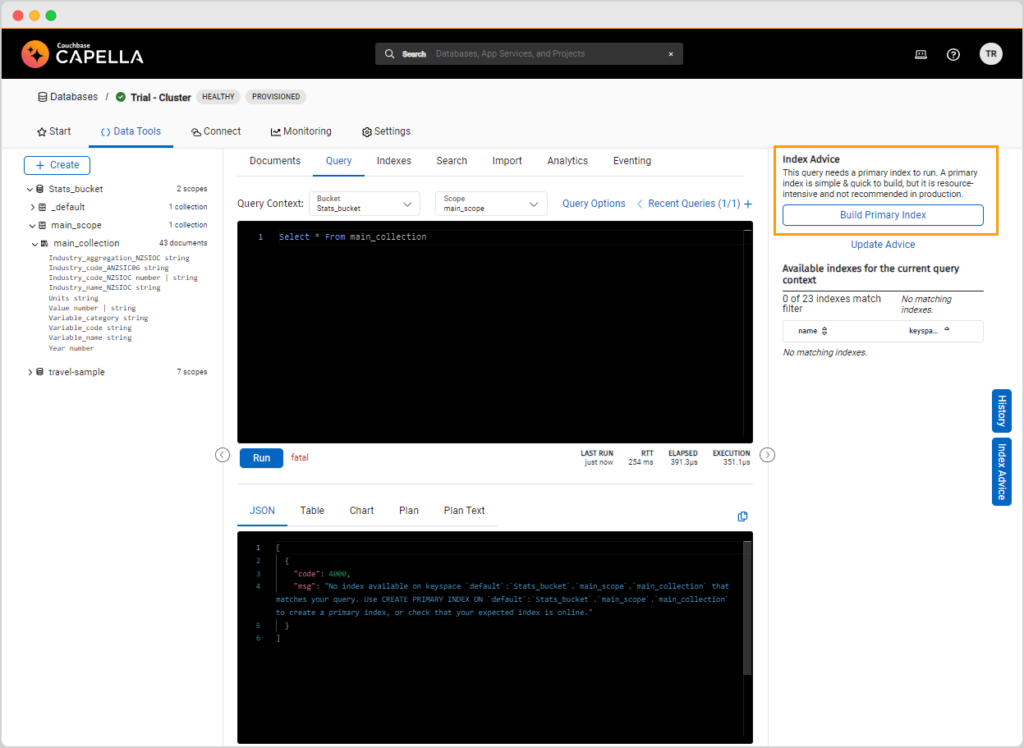
Streamlined connection setup
With your data loaded into Capella, it’s time to connect your IDE or application. The newly updated Connect page walks you through the steps of connecting via an SDK, how to connect via Couchbase Shell, and provides connection details for cbimport and cbexport.

Let’s focus on setting up a connection via an SDK. The UI presents the connection string you need for various connection methods. For security purposes, you’ll need to add an allowed IP address and set up database credentials. You will also need to install the SDK for your preferred language. There are more than 10 to choose from, including .NET, C, Go, Java, Kotlin, Node.js, PHP, Python, Ruby, and Scala. Within the Capella UI, code snippets and full code samples are provided for Java, Node.js, and Python. More information about all of our SDKs can be found on the SDK page of our Docs site.
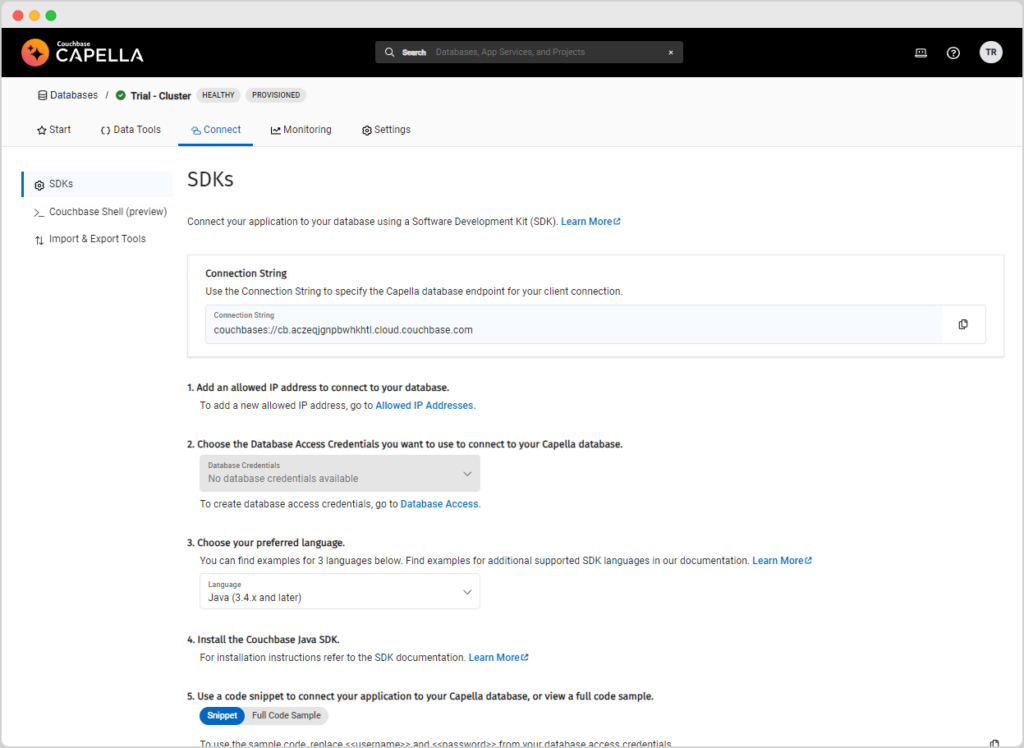
With the recent enhancements to the Capella UI, getting up and running is now even easier than before. If you are looking for a cloud database platform for your next project, test out Capella and get access to the core capabilities in our free trial. If you’re seeking something more advanced, work with our team for a more elaborate proof of concept (PoC). We’d love to work with you on your next project.
Next steps
-
- Sign up for a free trial
- Learn more about Capella
- Contact our team about a PoC
- Engage with our developer community on Discord